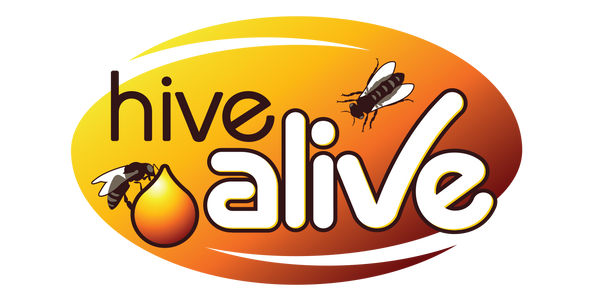High Summer Heat and your Bee Hives - Should you give your bees water?
Jul 21, 2025
Is Heat Stress Hurting Your Hives? Why Hydration, Ventilation & Nutrition Are Vital for Summer Beekeeping
As summer temperatures soar across the U.S., many beekeepers are noticing changes in hive behavior, and not all of them are good. If you’ve seen sluggish foraging, reduced brood rearing, or bees clustering in unusual spots, heat stress could be the cause.
Rising temperatures and prolonged drought conditions can dramatically impact honey bee colonies. From behavioral shifts to nutritional challenges, your bees are under pressure. But with the right support, you can help them stay productive and resilient through the toughest months of the season.
Let’s explore the science behind heat stress and share practical steps every beekeeper can take to protect their hives this summer.
The Science Behind Heat Stress in Honey Bees
Honey bees are highly adaptive, but extreme heat (especially above 100°F) pushes colonies to their limits. According to recent research and a USDA report on hydration, bees respond to elevated temperatures with a range of behavioral and physiological changes designed to survive, but not necessarily thrive.
Here’s what the science says:
-
Behavioral shifts: Worker bees move away from brood areas to reduce heat exposure to developing larvae.
-
Metabolic responses: Bees accumulate trehalose and polyols—compounds that help buffer cellular stress during extreme heat.
-
Foraging shutdown: Temperatures over 110°F can halt foraging completely due to dehydration and reduced flight efficiency.
-
Hive layout changes: Long-term heat exposure has been shown to impact comb structure and hive productivity.
Without intervention, colonies exposed to prolonged heat can suffer lasting damage: smaller population sizes, weakened immunity, increased susceptibility to pathogens, and poor preparation for overwintering.
Why High Heat Means Less Nectar
In addition to stressing bees directly, heatwaves also reduce the availability of forage. Drought conditions and high temperatures impact flowering plants in several ways:
-
Flowers stop producing nectar or dry up quickly to conserve water.
-
Blooming periods shorten, reducing the foraging window.
-
Soil moisture disappears, stunting plant growth and cutting off pollen and nectar sources.
Even in normally rich nectar regions, hot summers can create periods of nectar dearth - a dangerous time for colony health and development.
Beekeeper’s Summer Action Plan
So what can you do to support your bees during heatwaves and nectar shortages? Here are four scientifically supported strategies:
✅ 1. Improve Hive Ventilation
Use screened bottom boards and offset or top entrances to encourage airflow. Propping up the lid slightly (with a spacer) can also help hot air escape. Good ventilation reduces the effort bees must expend to keep the brood cool.
💧 2. Provide Clean, Consistent Water Sources
Set up shallow water stations with pebbles or floats so bees can land safely. Water is essential not just for drinking, but for evaporative cooling inside the hive. Consider placing stations in shaded areas near the apiary to reduce stress during collection.
Top Tip from the Yard:
Add a small amount of HiveAlive Liquid to outdoor water bowls or bee stations. It may support gut health and reduce algae buildup.
🍯 3. Offer Supplemental Feeding with HiveAlive
When nectar flow slows down, sugar syrup becomes a crucial lifeline. But not all syrups are created equal. By adding HiveAlive Liquid to your feed, you give bees not just carbohydrates - but added gut health support and pathogen protection.
Benefits of feeding with HiveAlive during heat stress:
-
Maintains colony strength during dearth periods
-
Supports brood production, reducing risk of cannibalism or queen failure
-
Minimizes nutritional stress that can lead to disease
🛡️ 4. Watch for Signs of Stress & Disease
High-heat conditions can weaken immune responses, making colonies more vulnerable to Nosema, viruses, and queen issues. Keep an eye out for unusual behaviors, dwindling populations, or abnormal brood patterns.
Why Supplemental Feeding is Smart Beekeeping
Even the best-managed hives can struggle when nature pulls back. Supplemental feeding is a proactive way to:
-
Prevent population crashes during hot, dry months
-
Strengthen colonies ahead of fall preparations
-
Reduce reliance on weakened natural forage
-
Maintain optimal gut health for digestion and immunity
HiveAlive Liquid has been shown to reduce spore loads, support intestinal health, and improve overall colony productivity. When combined with sugar syrup, it’s a cost-effective way to help your bees weather extreme conditions.
Final Thoughts: Don’t Let Heat Stress Set You Back
As climate patterns shift and summers grow more extreme, proactive beekeeping becomes more important than ever. By combining good hive management, hydration, and scientifically-backed nutrition strategies, you can keep your colonies thriving—even when the thermometer says otherwise.
Be sure to check out the USDA’s resource on “The Buzz Around Hydration” for even more insight into how water and temperature impact honey bee health.
